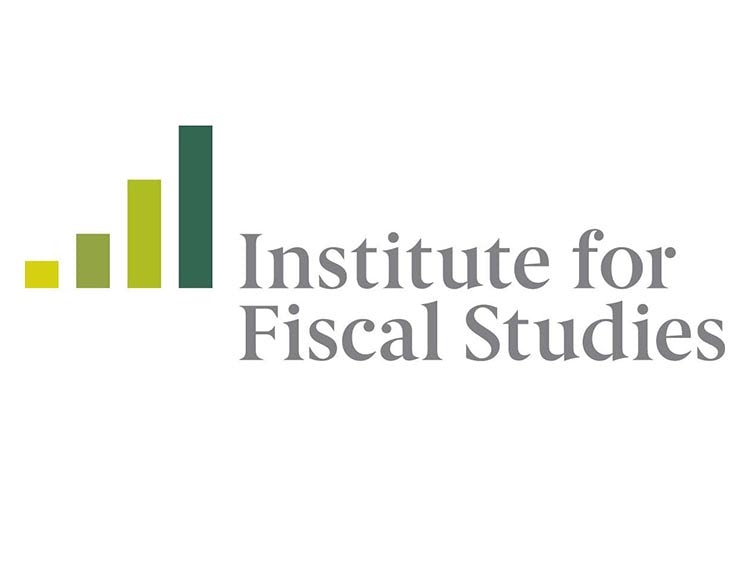How the COVID-19 pandemic might impact university finances

@EducationGovUK must back universities say @TheIFS as report warns of financial difficulties
Universities face billions of pounds in lost income due to the Covid-19 crisis that will leave some struggling to survive warns a report released today (6 Jul).
Responding to the analysis “Will universities need a bailout to survive the COVID-19 crisis?“, from researchers at the Institute for Fiscal Studies funded by the Nuffield Foundation, the University and College Union (UCU) said the government had to step in now with a comprehensive support package to protect universities.
The report warns that universities are unlikely to be able to claw back a large portion of losses through cost savings unless they make significant numbers of staff redundant. It says that while institutions with a larger proportion of temporary staff may be able to make greater savings, this may impact on teaching quality and risk reputational damage.
UCU said government support was vital to protect jobs, preserve the UK’s academic capacity and defend the quality of teaching and research. The union’s own research released at the start of the pandemic warned of a £2.5bn loss in income for universities from tuition fees and teaching grants, which would result in a £6bn hit for the economy.
A poll of prospective students released last month revealed that almost a quarter (23%) feared that the university they wanted to study at this year could go bust because of the Covid-19 crisis. Half (49%) feared that damage caused by funding cuts because of the pandemic would negatively impact on their education and over two-thirds (71%) backed a delay to the start of term.
In April, the Office for Budget Responsibility said education would be the sector hardest hit by the coronavirus crisis, with the impact likely to be felt most by universities.
Sector Response to analysis from the Institute for Fiscal Studies on the impact of Covid-19 on universities putting some at risk of insolvency
 Emma Hardy MP, Labour’s Shadow Minster for Further Education & Universities, said:
Emma Hardy MP, Labour’s Shadow Minster for Further Education & Universities, said:
“Universities can provide the training and skills we need to build back better as we emerge from the coronavirus crisis, but this report shows how under threat they are.
“Losing any university or cutting courses would mean losing opportunities to reshape lives, particularly for people who can only study locally such as carers and those who cannot afford to move away.
“The choice of a university education must remain available to everyone, wherever they live. The Government cannot allow a single university to fail.”
 UCU general secretary Jo Grady said:
UCU general secretary Jo Grady said:
“This report is more bad news for higher education. It’s been months since our own research laid bare the likely devastating impact of the pandemic on universities and the Office for Budget Responsibility singled the sector out as one most likely to suffer. The government has to now step in and guarantee lost funding for universities so they can weather this crisis and lead our recovery on the other side.
“This report warns of the damage redundancies can do to teaching quality and universities’ reputations. Universities are already seeking to sack staff, with casual staff and those from BAME backgrounds suffering the most. We need a comprehensive support package that protects jobs, preserves our academic capacity and guarantees all universities’ survival.”
 Universities UK Chief Executive Alistair Jarvis, said:
Universities UK Chief Executive Alistair Jarvis, said:
“As the IFS rightly highlight, Covid-19 is creating financially challenges for all parts of UK higher education. UUK have been working closely with government to develop a package of measures to address the scale and diversity of pressures facing the sector and the communities that rely on it across all four nations of the UK.”
“We have seen significant progress with a package of positive interventions to support university research and innovation. Our proposals to government, to support universities and ensure the economy has the high quality skills needed to recover from the pandemic, include a transformation fund for those universities that require support to achieve longer-term sustainability and financial support to help students who wish to study shorter higher education courses. Introducing these further measures should be a priority for government.
“Any student or their parents should be reassured that the failure of a university is rare, but course closures and occasionally campus closures are something many universities will have experience in managing and all registered universities have student protection plans in place for this scenario.”
 Nick Hillman, the Director of the Higher Education Policy Institute (HEPI), said:
Nick Hillman, the Director of the Higher Education Policy Institute (HEPI), said:
“The IfS report is as lucid and clear as we have come to expect from them. They are right that universities with more international students and bigger pension liabilities are more directly affected by Covid than others and also that institutions which were financially weak before the pandemic are the ones most at risk of actual insolvency. They are also right that the arguments for extra support for universities in the crisis are strong. But that doesn’t mean they’re right overall.
“There are three important points to note:
“First, the range of projected short-term financial losses for universities, which the IfS calculates at between £3 billion and £19 billion, is so enormous that it’s pretty meaningless in terms of planning ahead. It’s such a huge fan of uncertainty that it doesn’t help either universities or policymakers know where they stand.
“Secondly, there are too many reports around at the moment that take old opinion polls of how students might behave as the gospel truth. We know from when tuition fees in England went to £9k that polls which ask students how they might behave are a woeful guide to the future, and the IfS’s figures on student numbers should therefore be taken with a lorry load of salt.
“For example, the IfS are assuming there will be 10% fewer UK students, yet the latest UCAS figures show the opposite trend. Who would choose to have a gap year at the moment, when travel and job opportunities are so limited? The IfS are also predicting a 50% drop in EU students as a result of the pandemic, even though 2020 is the last year when they will be treated like home students. Unless there is a major second wave of Covid-19, the IfS’s “central” estimate for the short-term financial losses would be better labelled “pessimistic” and their “pessimistic” estimate would be better labelled “extreme”.
“Thirdly, the oddest feature of the IfS report is how very little it has to say on university research. When universities have less income and face big deficits, they can opt to stem the financial losses by doing less research as research generally loses money. Less research would be terrible for the UK as it would hamper the post-pandemic recovery. So the quantity of research that institutions can afford must be a bigger part of the wider conversation about university financing.
“There is a strong case for continuing government support for universities of all types because of the jobs they provide, the education they deliver and the support they provide to employers as well as the research they undertake.”
The ongoing COVID-19 crisis poses a significant financial risk to the UK higher education sector
Universities are facing big losses across a range of income sources and investments. These losses could cause serious financial problems, including – in the extreme – insolvency. Most institutions will be left with reduced net assets, which could increase financing costs and will leave them less well placed to cope with future adverse shocks.
This briefing note examines the resilience of university finances to the likely consequences of the COVID-19 outbreak and the public health response to it. For UK higher education institutions, we estimate the likely financial losses associated with the crisis under three different scenarios, reflecting different crisis trajectories in the coming months. We assess the chances of insolvency and estimate the cost of potential bailouts to the taxpayer.
Our main findings are:
- The total size of the university sector’s losses is highly uncertain: we estimate that long-run losses could come in anywhere between £3 billion and £19 billion, or between 7.5% and nearly half of the sector’s overall income in one year. Our central estimate of total long-run losses is £11 billion or more than a quarter of income in one year.
- The biggest losses will likely stem from falls in international student enrolments (between £1.4 billion and £4.3 billion, with a central estimate of £2.8 billion) and increases in the deficits of university-sponsored pension schemes, which universities will eventually need to cover (up to £7.6 billion, with a central estimate of £3.8 billion). In addition, the sector faces lockdown-related losses of income from student accommodation and conference and catering operations, as well as financial losses on long-term investments.
- Large sector-level losses mask substantial differences between institutions. In general, institutions with a large share of international students and those with substantial pension obligations are most affected. These tend to be higher-ranking institutions as well as postgraduate and music & arts institutions. Some of the least selective universities, which rely largely on domestic fee income, will also be badly hit if higher-ranked universities admit more UK students to make up for the shortfall in their international enrolments. While recently introduced student number caps will constrain some of this behaviour, there are still likely to be falls in student numbers at the least selective institutions.
- Universities are unlikely to be able to claw back a large portion of these losses through cost savings unless they make significant numbers of staff redundant. In our central scenario, we estimate that cost savings could reduce the overall bill by only £600 million or around 6% without redundancies. The potential for cost savings varies across universities: institutions with a larger proportion of temporary staff will likely be able to make larger savings, but this may impact teaching quality.
- For the university sector as a whole, net losses in our central scenario are only slightly larger than five years of surplus at the pre-crisis level. Assuming that the underlying profitability of universities remains unchanged, the total financial reserves of the higher education sector could still be roughly the same in 2024 as they were in 2019, even without a government bailout.
- Whether COVID-related losses put a given institution at risk of insolvency largely depends on its profitability and its balance sheet position before the crisis, rather than on its predicted losses from COVID-19. The institutions with the highest predicted losses all have large financial buffers and are therefore at little risk of insolvency. The institutions at the greatest risk tend to have smaller predicted losses, but had already entered the crisis in poor financial shape.
- In our central scenario, 13 universities educating around 5% of students would end up with negative reserves and thus may not be viable in the long run without a government bailout or debt restructuring. A very tightly targeted bailout aimed at keeping these institutions afloat could cost around £140 million. In comparison, a one-off increase in teaching grants of £1,000 per UK/EU student would cost £1.8 billion but in our central scenario would only push three institutions above the line of zero reserves.
- There is considerable uncertainty over actual risks to institutions and a trade-off between highly targeted and more general support. And additional support might not be aimed purely at preventing insolvencies. But there is a big gap in cost between a very targeted bailout costing perhaps less than £200 million and the more generalised bailout proposed by Universities UK, which would cost £3.2 billion and at the same time provide very little support to most universities that appear to be most at risk of insolvency; according to our modelling, only two institutions would be pushed above the line of zero reserves by this proposed policy. Government will need to be very clear about the purpose of any bailout package and design it accordingly.`
- Lightly regulated Alternative Providers educate around 3% of all students in the higher education sector. Many of these providers have low reserves and rely almost exclusively on tuition fees for their income. Alternative Providers with a large share of international students are at a significant risk of insolvency, potentially leaving students unable to complete their degrees.











Responses